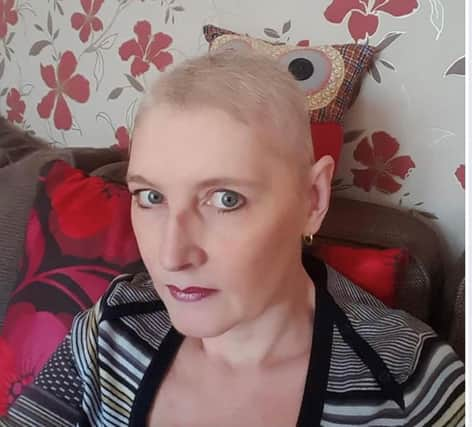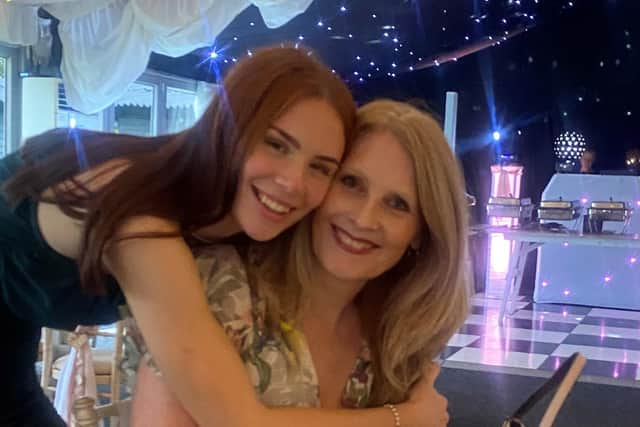Rugby mum shares symptoms she experienced before leukaemia diagnosis aged 47


When Rugby woman Kirsty Sadler was rushed to hospital on her 47th birthday, she had no idea of the terrifying journey ahead of her.
A blood test confirmed the wife and mother had leukaemia.
Kirsty, now 53, put her symptoms down to both her age and the stresses of a busy job. However, when she suddenly collapsed and was rushed to A&E, tests confirmed she had chronic lymphocytic leukaemia (CLL).


Advertisement
Hide AdAdvertisement
Hide AdShe said: “At 46 I was a wife, a mother of a ten-year-old and a full-time worker in a very pressured and stressful role. Tiredness was a regular thing together with headaches, night sweats and unexplained bruises and regular urine tract infections (UTI), all of which I put down to age, stress and a busy life.”
Kirsty was diagnosed in August 2016.
"On the day of my 47th birthday, I collapsed suddenly and was taken to A&E where they ran blood tests,” she added.
"They found that my white blood cell (WBC) count was at 77k, substantially above the normal range of 4 – 11k. Clearly something was wrong. Further tests were to be arranged and I was to attend a meeting with a haematologist ten days later.”
She said her feelings swung from complete fear to nonchalance.
Advertisement
Hide AdAdvertisement
Hide AdKirsty went on: “By the time of the meeting, I had convinced myself it was just a random test result, a blip, caused by another UTI. But I could tell from the start of the appointment that there was something seriously wrong. And sure enough, I was told I had chronic lymphocytic leukaemia (CLL). Blood cancer.”
Kirsty, a membership team leader for a professional engineering institution, said she hadn’t even heard blood cancer.
“I went into a stage called ‘watch and wait’ which is exactly what it says – watch the results and wait for them to change.
“CLL has many different mutations, some better and slower moving than others, so watch and wait can last years, even decades, for some. I had appointments every couple of months, but the WBC was rising slowly, so I hoped that I was one of the lucky ones that just lived life fairly unaffected by CLL.”
Advertisement
Hide AdAdvertisement
Hide AdShe opted to join a trial – less invasive than traditional chemotherapy. In preparation, bone marrow was taken for analysis.
Kirsty said: “Just three weeks into the trial, I was called in to see the consultant who most apologetically told me I was not eligible for the trial as my results showed that I had 17p and tp53 deletion, the most high risk form of CLL there is and which does not respond to chemotherapy. Whilst I had not been selected for the chemotherapy arm of the trial, I did not fit the criteria for selection. I had read a little about this strain of CLL and my only question was how long did I have to live. The consultant dismissed that immediately, telling me that he had already discussed my case with his colleagues, and I was to be put forward for a stem cell transplant.”
She was admitted in July 2018 to begin conditioning treatment ready to receive her donor cells.
Kirsty said: "Six days of chemotherapy and other medication ensured that my immune system was destroyed in order for the donor cells to begin rebuilding a new immune system. The six months following were tough. No energy, unable to eat much, housebound. Just walking up the stairs was exhausting. But slowly, I regained my strength and was able to do normal day to day tasks.”
Now she said she feels great and finally has her life back.
Advertisement
Hide AdAdvertisement
Hide Ad“I’m even looking forward to getting back to work later this year,” added Kirsty.
"Without my selfless donor, I would have had five years at the most. Now I get to see my daughter grow up and maybe even my future grandchildren.”
She had a successful SCT in July 2018 and is now considered fully cured by her consultant.
Kirsty said: “I guess the five-year mark will be the main marker. I was fortunate to have no GVHD or mucosis during or post-transplant and I feel 100 per cent. There seem to be no adverse impacts physically.
Advertisement
Hide AdAdvertisement
Hide Ad"I ran the 30 miles in a month a year or so ago for Antony Nolan and I am a buddy and patient advisory panel member for Leukaemia Care.
"Now, I’m looking forward to my future.”
The most common symptoms of leukaemia are fatigue, bleeding and bruising, repeated infections, fever or night sweats, bone or joint pain and shortness of breath. If you have any of these symptoms, contact your GP and ask for a blood test. To find out more visit https://www.spotleukaemia.org.uk/
